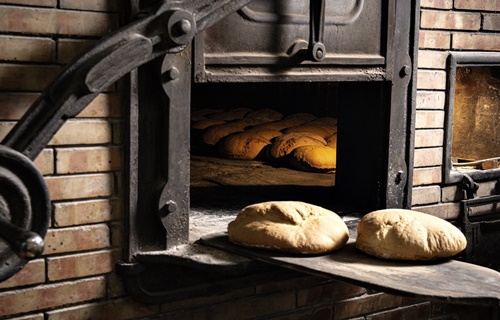Asbestos in Old Bakery Ovens and Industrial Kitchen Stoves

Considering the many ways asbestos was applied wherever possible during the last century, it seems there is no trade where the fibrous mineral wasn't applied in one way or another. It's a fact nowadays that numerous American industries used asbestos for most of the 20th century.
The hazardous material was appealing because it prevented fires, and many businesses relied on it for decades as an insulant. The food industry was no exception. Flames in baking ovens and cooking stoves often reach extremely high temperatures, so effectively insulating them was paramount. Asbestos, the most accessible insulation material on the market, was the logical next step to line the ovens and stoves. Fireproof asbestos lining inside and asbestos seals around the doors kept the flames within the oven and prevented heat damage to any parts.
Over time, asbestos becomes friable due to wear and tear. Asbestos-containing materials also fray and, if disturbed, release microscopic particles into the atmosphere. When oven and stove asbestos matured enough to disintegrate slowly, handling these items became a health risk for catering industry workers.
Unusual Sources Of Asbestos Exposure
Being uninformed about the daily hazards asbestos represents, bakeries and industrial kitchen employees couldn't avoid inhaling or ingesting the tiny asbestos fibers. Human errors like lack of inspection and maintenance sped up the process of asbestos linings becoming worn and breaking down. Asbestos particles could be disturbed, dislodged, and airborne whenever oven doors were slammed. The exact process happened when cleaning was done at the end of a shift. Any person who worked near or with baking ovens or cooking stoves made before the 1980s risked asbestos exposure and developing life-altering asbestos diseases decades later through:
- repair
- cleaning
It made things worse that asbestos fibers would sometimes fall into the bread while baking, endangering anyone who sold and bought the product. Even though specific trades such as construction or insulation exposed people to the hazardous mineral more, and their spouses and children would suffer second-hand exposure, diseases related to the toxic substance occurred in:
- bread bakers
- pizza makers
- pastry cooks
- read/pastry sellers
- auxiliary kitchen personnel
- chefs
While the numbers are low, asbestos exposure is common in this group. Cases of mesothelioma or other severe asbestos diseases stand as examples of injuries caused by toxic asbestos fibers. Today's asbestos exposure happens due to "legacy asbestos," or any asbestos still existing from its original installation in bakery ovens and stoves in industrial-scale kitchens.
Getting Professional Help Is Important Whether in an Industrial or Domestic Setting
Asbestos represents a hazard in every appliance, product, or building only when disturbed. While dealing with this toxic material, administrators, homeowners, or business owners should consider that no exposure to the microscopic fibers is safe. Getting professional help is always advisable, as only licensed professionals can safely handle asbestos-containing products or contaminated debris. Small-scale home improvements may not require professional help, but safe removal methods should be followed when handling asbestos.
